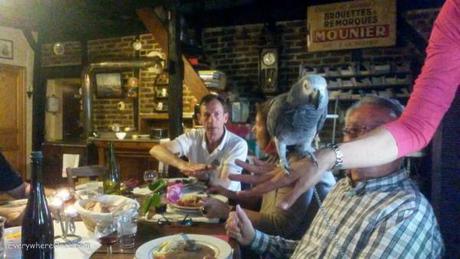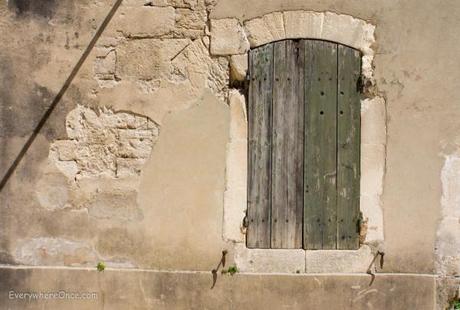
What makes this style so distinctively French? A certain je ne sais quoi!
It sounds like the beginning of a bad joke: we’re at a dinner party with some Russians, Germans, French and Dutch when the parrot asks an intriguing question.
Ok, the parrot didn’t ask this particular question, but I had to work the parrot in somehow. Surprisingly he was not part of the menu.
Instead, I think we were all savoring some asparagus soufflé when the Dutch gentleman asked us to describe the main differences we noticed between traveling in Europe and traveling in the U.S. We should have had a ready answer, but we were strangely dumbstruck. In retrospect, it was obvious.

Pénélope wants an answer.
A quick look around the table said it all. From a traveler’s perspective, there is just so much more diversity in Europe than there is in the U.S. Crossing the border between Spain and France made that abundantly clear.
In our U.S. travels we crossed state borders all the time. If it weren’t for those giant welcome signs along the highway we might have never known. For the most part you can drive 1,000 miles in any direction within the U.S. and when you get out of your car you’ll likely be greeted by familiar food, similar architecture, and by someone who speaks the language of the place you just left.
We found none of those familiarities after emerging from a 200-mile train ride from Spain to France. Crossing the border changed almost everything.

The pastels of Provence
Obviously they spoke French in France. We found that a little disorienting. We had grown so accustomed to reflexively mangling Spanish over the previous month that it was difficult for us to switch gears and properly, or at least singularly, mangle the French language. Whenever we tried speaking with someone we’d inevitably smash Spanish, French and English together into an incomprehensible gibberish that one might call “Franglish.” It took us about a week to stop doing that entirely.
But even if we never spoke to a single soul or heard anyone else speaking, we’d still have known the minute we got off the train that we were someplace different. French Renaissance style architecture, after all, is so distinctly French. It’s unlike anything we’d ordinarily see in Spain and, not surprisingly, there’s quite a lot of it in France.
As are people carrying baguettes. It’s an obvious stereotype but one that nonetheless seems true. If you find yourself somewhere surrounded by people carrying around small loafs of bread at mid-day, there’s a good chance you’re in France.

It’s not called French bread for nothing.
Although we didn’t really need to see the people or hear them speak to know we weren’t in Spain any longer. The wonderful aromas wafting out of kitchens along nearly every street we ventured told us we were someplace new. And those terrific smells correspond to a cuisine that is markedly different from the one just across the border.
By sight and by smell, by hearing and by tasting, each of our senses confirmed that we were no longer in Spain. We had only traveled a couple hours by train, but that journey took us a world away. That isn’t something you typically experience traveling around the U.S. But as we make our way through Europe over the next several years, it’s something we expect to encounter again and again.

